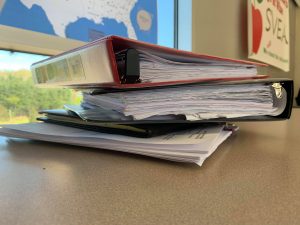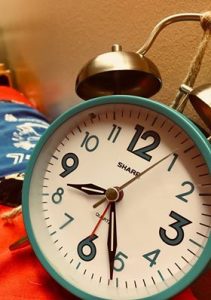Wow! I cannot believe that it is almost the end of the semester, especially because this one seems like it has gone by so quickly. From concept to finished website, I have learned so much from this course and the project. Plus, it feels really nice to google ‘The Floatplane Project COPLAC’ and see the finished website pop up on my laptop screen!!
Overall
Reflecting on the website, I feel as if I met or exceeded most of the terms set forth in the agreement. First, the website thoroughly honors the fundamental purpose of its creation, which was to “educate a general public audience on the censorship movement against Clyde Edgerton’s The Floatplane Notebooks in Carroll County Public Schools in Carroll County, VA in 1992. . . [and]. . .explore dimensions of literary censorship with the intention of providing necessary context for the Carroll County case and the course” (Turner, 2019). On the site, I provided information on the case and attempted to make some concrete connections between all the sections of the site. I also made specific, such as the colors and the pictures, that I thought would appeal best to a more universal audience instead of one specific audience. Generally, I also stayed true to the original description of my website, with the five original information categories and page citations using links and footnotes (which was a very interesting experience because my APA-trained brain had to learn the basics of Chicago Manuscript Style!) (Turner, 2019).
Website Pages and Information
As far as its pages, the project actually exceeds the scope of pages listed in the contract. For example, the context section of the site was supposed to have two pages, one on Carroll County and one on Appalachian culture (Turner, 2019), but the finished project has three – the two listed in the contract plus an additional page on Appalachian literature. I knew after I drafted the first two pages that I could never cover the information I wanted to in two pages, so dividing the culture and literature page allowed me to look deeper into the historical roots of Appalachian culture and the trends of Appalachian literature, especially as literature is related to the representation of culture. In addition, the case section contained some different/additional sections from the three listed in the contract, the challengers of the case, the community reactions to the case, and research conclusions from the case (Turner, 2019). Instead of those three, I divided the challengers section into one section for individuals who challenged the book and one for those who defended the book. I kept the administration and research conclusion pages the same in structure. To add to the project and to compensate for the removal of the section on the media, I chose relevant news articles and school board documents to feature as subpages under the divisions that characterize the information I am presenting on the pages.
Beyond the changes, I would like to briefly discuss the pages that mostly stayed the same. I think the homepage is beautiful and engaging – it is everything I wanted it to be when I set to creating an interactive menu in my contract (Turner, 2019). I also think that the slider gives the page some life about it because it moves and ties in the site. In addition, the section about the project also remained very close to the vision of the contract, in which the section was supposed to have a page on the project, a page on the website, and a page about me (Turner, 2019). In fact, the page on the website is one of my favorite pages on the site because it offers an explanation of choices, similar to this blog post, but I also think it serves the analysis I offered on the case by talking about the presentational choices that I made in re-telling the story of The Floatplane Notebooks in Carroll County.
Time and Deadlines
If I chose one area I struggled with on the project, it would be time. Owing partly to the fact that this was a single person project, I had to pace in order to finish the website with quality and scope that I wanted it to be – especially because I left my contract worrying if I has created a plan that was too ambitious for the amount of time I had in the semester. Having finished the website, I feel I can say that my contract definitely was ambitious, especially when it came to drafting out the schedule for completion of milestones. In the contract, I divided completing sections of the site with conducting research on for the project throughout the semester, but I gave myself room to move those deadlines if necessary (Turner, 2019). I ended up moving a lot of those deadlines, often times beyond what I had anticipated when I wrote the contract. For example, with contacting the school board and alumni groups, I did not get responses as quickly as I had hoped, which caused me to change my plans for working on the site. For the first few weeks, I also delayed in sending out information to Ms. Goldwasser, which also placed me behind schedule. However, all of the deadlines were met (excepting, getting responses from the alumni because I was not able to gain permission to post on the social media group). Generally, I put in my contract that I would work on the site at least one hour and fifteen minutes per day (Turner, 2019). For the most part, I met that requirement. I can only count a handful of days – around 10 – where I did not meet the requirement. However, on weeks where I did not meet the requirement, and on weeks closer to the deadlines of the project, I found that I spent more time, often whole weekends, finishing up drafts and revisions for the week. In the end, I finished the website draft on April 8, a day earlier that the April 9 date, I had listed on my contract (Turner, 2019). I finished the final revisions fore the website on April 26, the day it was due for the course (I discovered that I listed April 16 as the due date for the final revisions for my site (Turner, 2019), which was an error in my contract).
Although I would love to expand and further revise the site if time allowed, especially because I had a few more materials that I did not get to feature on the site, I feel confident in saying that this project is positively representative of the terms of the contract and that it is a sincere, thorough, and hard-work-filled attempt to record and analyze the Carroll County case, as well as to apply what I have learned and considered from the readings and discussions from throughout the semester.
References
Turner, T. (2019). Burning Idea Course Contract_Spring 2019_TurnerUVAWISE. [PDF]. Wise, VA.


